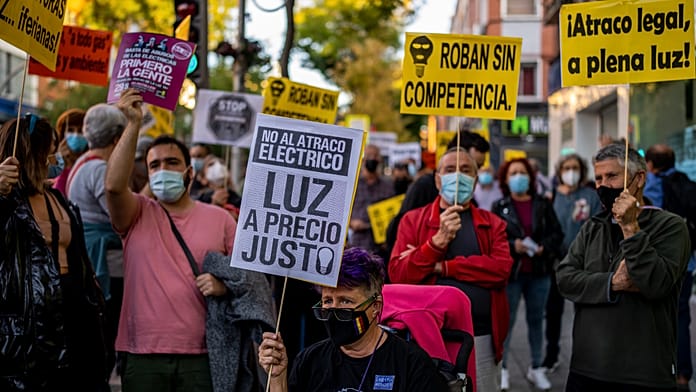Many visitors to Bologna assume that the massive basilica of San Petronio in Piazza Maggiore is, given its prominent position, the city’s cathedral. However, the cathedral church of San Pietro is a few hundred metres away in Via dell’Indipendenza where it has stood in one form or another for over a thousand years.
 The baroque facade of San Pietro, at left, is hard to appreciate from narrow Via dell’lndipendenza. (P. Granville)
The baroque facade of San Pietro, at left, is hard to appreciate from narrow Via dell’lndipendenza. (P. Granville)The origins of the church are obscure and the first documented evidence is of a baptistry in this location in the year 1054. This structure was possibly built in the 6th century. The original bell tower, 30 metres high, elliptical at the base and circular at the top, is also likely to have been built around this time. It has a style reminiscent of bell towers found in Ravenna such as that of Sant’Apollinare, built in the 6th century.
 The original bell tower was probably similar to that of the basilica di Sant’Apollinare Nuovo in Ravenna. (Wikimedia)
The original bell tower was probably similar to that of the basilica di Sant’Apollinare Nuovo in Ravenna. (Wikimedia)While the location of San Pietro seems today to be unusual, in medieval times it faced the Imperial Castle, recalled by nearby Via Porta di Castello and some vestiges inside the Medieval Museum. This had been the location of a market in the ancient Roman era and close to the town’s geographic centre (see my post Ancient Roman Bologna). In the 19th century, Via dell’Indipendenza was created, completely changing the streetscape, and the piazza that was located in front of San Pietro disappeared.
The bell tower survived a fire in 1141 which destroyed the church, and its height was increased to 40 metres as part of the rebuilding work. The tower also withstood an earthquake in 1222. In 1254, the 70 metre high square bell tower that we see today was built over the top of the original one, which remains underneath. The lead covered dome topping the tower was added later, in 1426.
 Looking up inside the original bell tower. (P. Granville)
Looking up inside the original bell tower. (P. Granville) Two views of the bell tower showing the new tower built over the original one. (P. Granville)
Two views of the bell tower showing the new tower built over the original one. (P. Granville)At the time of writing (June 2023), the bell tower was open to visitors on Saturdays and Sundays, thanks to a group of youthful volunteers. The cost was €5, which also included admission to the crypt.
Look for the sign below placed outside the church to see if the bell tower is open at the time of your visit to Bologna.

Entry is either at the end of the right hand aisle or through a glass door at the side of the church on the rear right hand side in Via Altabella.
Visitors initially climb up a set of stairs between the walls of the new and old towers. On busy days it can be quite tight with many people going up and down at the same time. Also, towards the top there is little lighting and some visitors use their phones as a torch.
 It can get crowded in the stairwell. (P. Granville)
It can get crowded in the stairwell. (P. Granville)Eventually you will arrive at a chamber below the belfry, where in very busy times you may need to wait a short while until other visitors leave before going up the stairs.
 The level below the belfry. (P. Granville)
The level below the belfry. (P. Granville) The belfry. (P. Granville)
The belfry. (P. Granville)There are 4 bells. The largest, cast in 1594, weighs over 3 tons. It is rarely used, as a team of 23 bell ringers is required to ring it along with the other 3 bells. When all are ringing, the tower is said to visibly shake.
 The largest bell, nicknamed ‘nonna’ or ‘grandmother’, weighs over 3 tons and its clapper alone weighs 72kg. (P. Granville)
The largest bell, nicknamed ‘nonna’ or ‘grandmother’, weighs over 3 tons and its clapper alone weighs 72kg. (P. Granville) This bell was cast in 1613. (P. Granville)
This bell was cast in 1613. (P. Granville) Graffiti in the belfry – “He who doesn’t keep quiet pays for a jug of wine” (P. Granville).
Graffiti in the belfry – “He who doesn’t keep quiet pays for a jug of wine” (P. Granville).  Stone decoration in the belfry. (P. Granville)
Stone decoration in the belfry. (P. Granville)Bologna has a special method of bell ringing in which the bells at times rotate through 360 degrees. The tradition is kept alive by the Bolognese Bell Masters Union. The 1934 film clip below shows Bolognese bell ringers in action.
The belfry has a number of windows affording wonderful views of the city.
 The top of the bell tower with its lead covered dome. (P Granville)
The top of the bell tower with its lead covered dome. (P Granville) Looking towards San Petronio and Palazzo Re Enzo from the top of the tower. (P. Granville)
Looking towards San Petronio and Palazzo Re Enzo from the top of the tower. (P. Granville) The Azzoguidi tower with the “twin towers” in the background. (P. Granville)
The Azzoguidi tower with the “twin towers” in the background. (P. Granville) A view of the nave of San Pietro from the top of the tower. (P. Granville)
A view of the nave of San Pietro from the top of the tower. (P. Granville)A visit to the bell tower is well worth it for the view alone. Don’t forget to have a quick look at the crypt on the way out, where you will see remnants of the original church as well as some Roman remains. Entry is included in the ticket to climb the tower .
 Remains of the original 9th or 10th century San Pietro church in the crypt. (P. Granville)
Remains of the original 9th or 10th century San Pietro church in the crypt. (P. Granville)In the church, look out for 3 lions and a barley sugar column that once formed part of the “Portal of the Lions” that was completed in 1261 and provided an entrance to the south side of the nave. It was removed in the 16th century when the church was rebuilt following badly conceived renovations that caused the roof to collapse.
 This marble lion was converted into a font sometime over the last 500 years. (P. Granville)
This marble lion was converted into a font sometime over the last 500 years. (P. Granville)  A barley stick column that formed part of the former side entrance to San Pietro. (P. Granville)
A barley stick column that formed part of the former side entrance to San Pietro. (P. Granville)Also don’t forget to visit the “Compianto di Cristo Morto” or “Lamentation over the dead Christ”, a work from the 1520s by Alfonso Lombardi located near the entrance to the cathedral. It’s similar to the famous set of figures in the church of Santa Maria della Vita.

For more on Bologna’s terracotta, see my post Bologna “La Rossa“.

 2 anni fa
693
2 anni fa
693






















